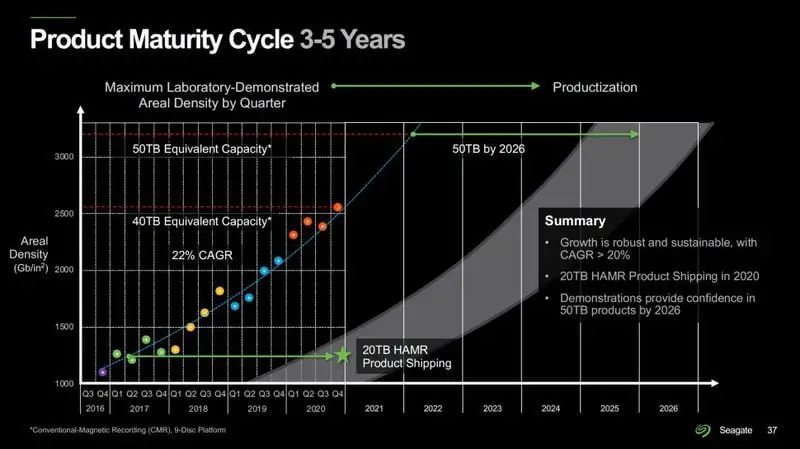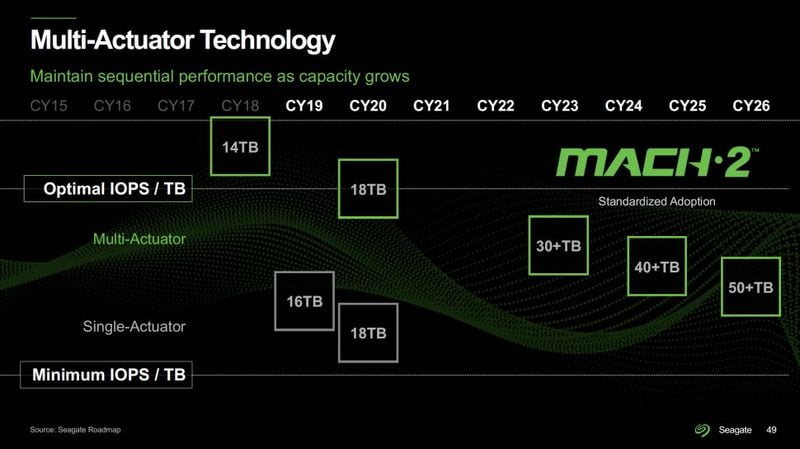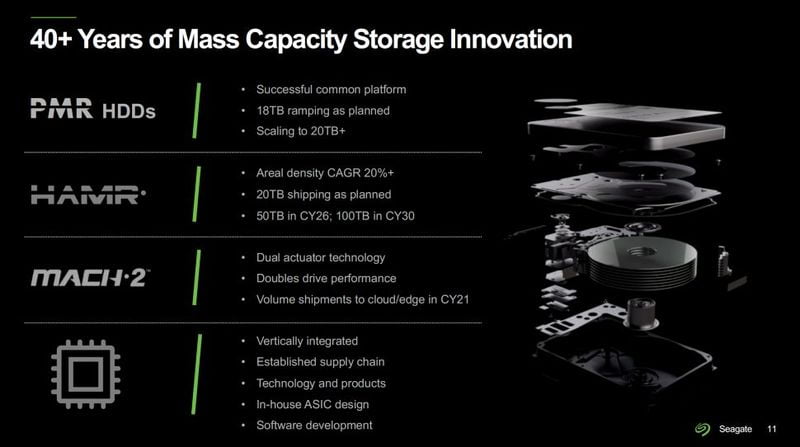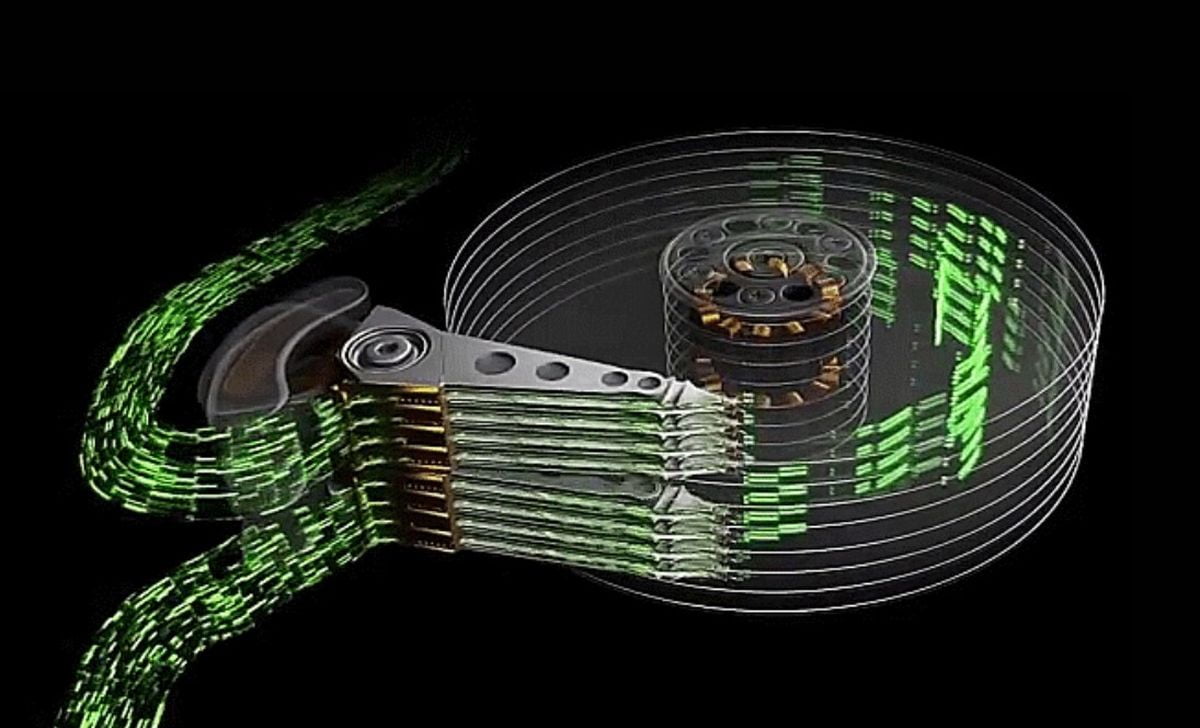Seagate prepares 100TB hard drives, expects to have them ready by 2030 thanks to HAMR technology. It’s 2021 and the norm for a desktop PC is to have an SSD and perhaps a 4TB, 8TB, or 12TB hard drive. There are traditional drives up to 20TB, but those limits will be exceeded in a few years.
Seagate prepares 100TB hard drives, expects to have them ready by 2030 thanks to HAMR technology
That’s at least according to Seagate, whose HAMR technology will allow them to bring 50TB drives to market in 2026. That capacity will reach 100TB in 2030, and shortly after that, they claim they will reach 120TB hard drives that will leave the capacities we manage today completely behind.
Seagate is already marketing 3.5-inch drives with a capacity of 20TB based on HAMR (Heat-Assisted Magnetic Recording) technology. This system will allow the company to increase the recording density of its platters by 20% per year, which will result in drives of ever-greater capacity.
The firm’s officials made it clear that PMR (Perpendicular Magnetic Recording) technology is reaching its limits and capacity increases with drives of this type is limited to a 1 or 2TB improvement in these drives. “With HAMR technology, we will be allowed to jump in steps of 4, 6, and even 10TB at a time.”
HAMR technology is important because it effectively seems to give leeway for traditional hard disk drives to continue to make sense.

It will still be a while before we see drives on the market that reach 40TB, for example – Western Digital has also been aiming for this for some time – and in fact, the increase in density also implies changes in the type of media used.

From today’s aluminum or glass platters or disks with a nanogranular film, we will move to platters with special magnetic films with new compositions that will enable data recording densities of more than 8 terabits per square inch by the beginning of the next decade, when they are now around 1.3Tbits per square inch.

That increased capacity will be accompanied by increased performance, something that will be achieved by a fairly simple method: increasing the number of reading/write heads (“actuators”). Seagate is already developing its Mach.2 technology with two such heads and has put it to work on some experimental drives, but that is expected to be the norm in the future when 30TB drives will be the standard.

Although the increased capacity and actuators make everything more complex and more costly to produce, Seagate says that traditional hard disk drives will still offer a lower cost per gigabyte than SSDs do. It seems, therefore, that the pairing of the two will continue to be true for a long time to come.





